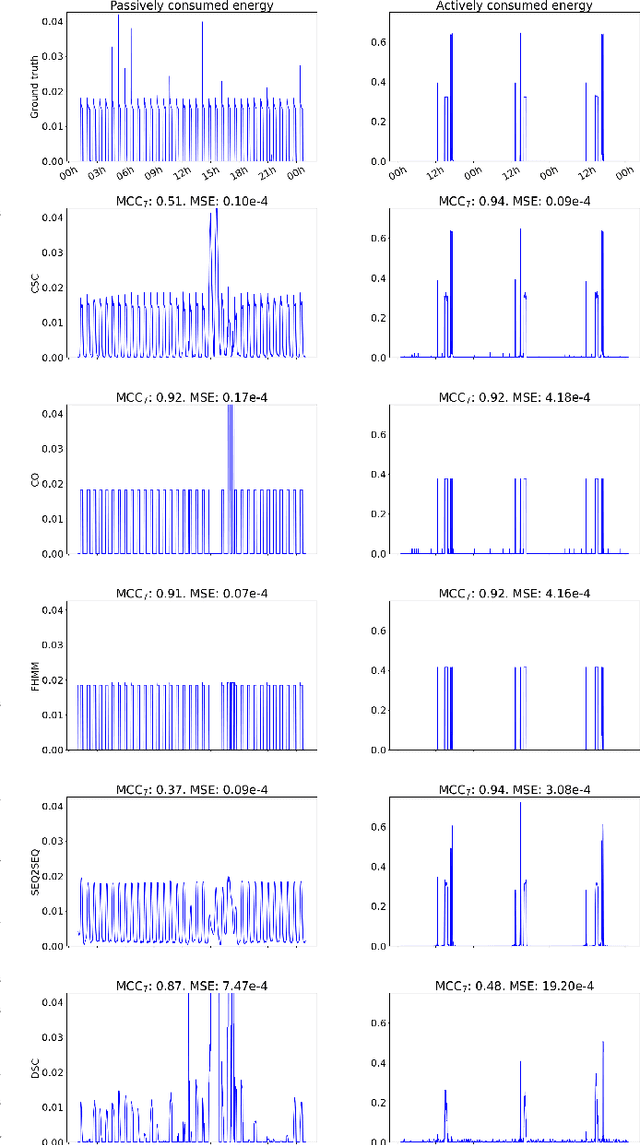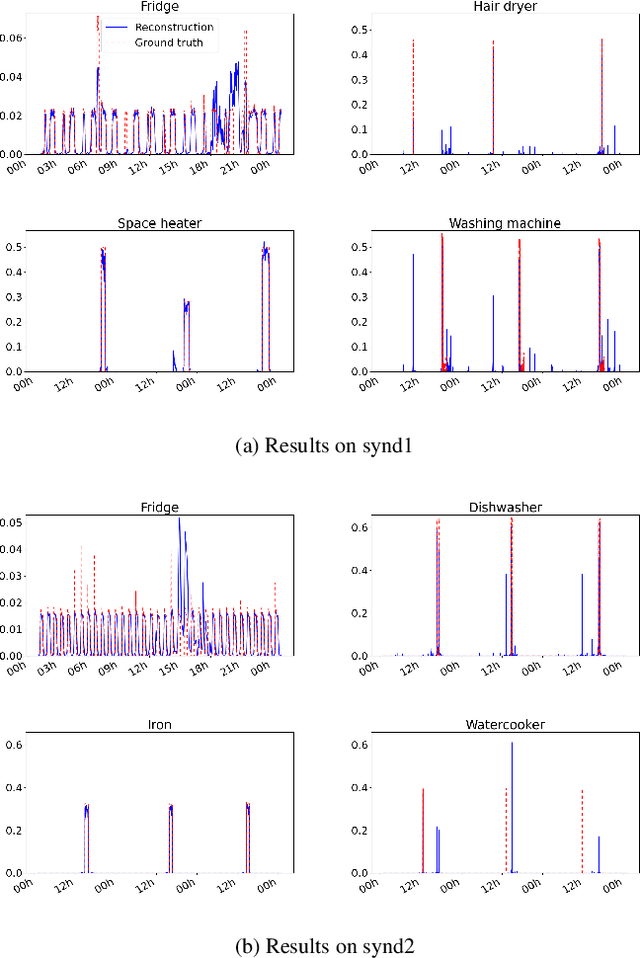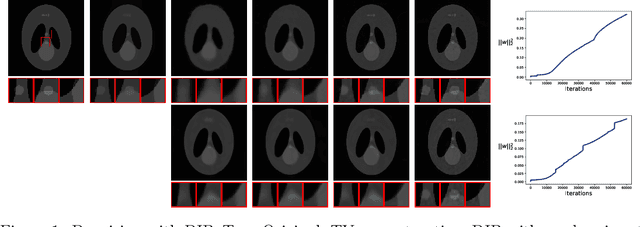Andreas Habring
University of Graz
Energy-based models for inverse imaging problems
Jul 16, 2025Abstract:In this chapter we provide a thorough overview of the use of energy-based models (EBMs) in the context of inverse imaging problems. EBMs are probability distributions modeled via Gibbs densities $p(x) \propto \exp{-E(x)}$ with an appropriate energy functional $E$. Within this chapter we present a rigorous theoretical introduction to Bayesian inverse problems that includes results on well-posedness and stability in the finite-dimensional and infinite-dimensional setting. Afterwards we discuss the use of EBMs for Bayesian inverse problems and explain the most relevant techniques for learning EBMs from data. As a crucial part of Bayesian inverse problems, we cover several popular algorithms for sampling from EBMs, namely the Metropolis-Hastings algorithm, Gibbs sampling, Langevin Monte Carlo, and Hamiltonian Monte Carlo. Moreover, we present numerical results for the resolution of several inverse imaging problems obtained by leveraging an EBM that allows for the explicit verification of those properties that are needed for valid energy-based modeling.
The Gaussian Latent Machine: Efficient Prior and Posterior Sampling for Inverse Problems
May 19, 2025Abstract:We consider the problem of sampling from a product-of-experts-type model that encompasses many standard prior and posterior distributions commonly found in Bayesian imaging. We show that this model can be easily lifted into a novel latent variable model, which we refer to as a Gaussian latent machine. This leads to a general sampling approach that unifies and generalizes many existing sampling algorithms in the literature. Most notably, it yields a highly efficient and effective two-block Gibbs sampling approach in the general case, while also specializing to direct sampling algorithms in particular cases. Finally, we present detailed numerical experiments that demonstrate the efficiency and effectiveness of our proposed sampling approach across a wide range of prior and posterior sampling problems from Bayesian imaging.
Diffusion at Absolute Zero: Langevin Sampling Using Successive Moreau Envelopes
Feb 03, 2025



Abstract:In this article we propose a novel method for sampling from Gibbs distributions of the form $\pi(x)\propto\exp(-U(x))$ with a potential $U(x)$. In particular, inspired by diffusion models we propose to consider a sequence $(\pi^{t_k})_k$ of approximations of the target density, for which $\pi^{t_k}\approx \pi$ for $k$ small and, on the other hand, $\pi^{t_k}$ exhibits favorable properties for sampling for $k$ large. This sequence is obtained by replacing parts of the potential $U$ by its Moreau envelopes. Sampling is performed in an Annealed Langevin type procedure, that is, sequentially sampling from $\pi^{t_k}$ for decreasing $k$, effectively guiding the samples from a simple starting density to the more complex target. In addition to a theoretical analysis we show experimental results supporting the efficacy of the method in terms of increased convergence speed and applicability to multi-modal densities $\pi$.
Neural-network-based regularization methods for inverse problems in imaging
Dec 22, 2023Abstract:This review provides an introduction to - and overview of - the current state of the art in neural-network based regularization methods for inverse problems in imaging. It aims to introduce readers with a solid knowledge in applied mathematics and a basic understanding of neural networks to different concepts of applying neural networks for regularizing inverse problems in imaging. Distinguishing features of this review are, among others, an easily accessible introduction to learned generators and learned priors, in particular diffusion models, for inverse problems, and a section focusing explicitly on existing results in function space analysis of neural-network-based approaches in this context.
Posterior-Variance-Based Error Quantification for Inverse Problems in Imaging
Dec 23, 2022Abstract:In this work, a method for obtaining pixel-wise error bounds in Bayesian regularization of inverse imaging problems is introduced. The proposed method employs estimates of the posterior variance together with techniques from conformal prediction in order to obtain coverage guarantees for the error bounds, without making any assumption on the underlying data distribution. It is generally applicable to Bayesian regularization approaches, independent, e.g., of the concrete choice of the prior. Furthermore, the coverage guarantees can also be obtained in case only approximate sampling from the posterior is possible. With this in particular, the proposed framework is able to incorporate any learned prior in a black-box manner. Guaranteed coverage without assumptions on the underlying distributions is only achievable since the magnitude of the error bounds is, in general, unknown in advance. Nevertheless, experiments with multiple regularization approaches presented in the paper confirm that in practice, the obtained error bounds are rather tight. For realizing the numerical experiments, also a novel primal-dual Langevin algorithm for sampling from non-smooth distributions is introduced in this work.
Unsupervised energy disaggregation via convolutional sparse coding
Jul 20, 2022



Abstract:In this work, a method for unsupervised energy disaggregation in private households equipped with smart meters is proposed. This method aims to classify power consumption as active or passive, granting the ability to report on the residents' activity and presence without direct interaction. This lays the foundation for applications like non-intrusive health monitoring of private homes. The proposed method is based on minimizing a suitable energy functional, for which the iPALM (inertial proximal alternating linearized minimization) algorithm is employed, demonstrating that various conditions guaranteeing convergence are satisfied. In order to confirm feasibility of the proposed method, experiments on semi-synthetic test data sets and a comparison to existing, supervised methods are provided.
A Note on the Regularity of Images Generated by Convolutional Neural Networks
Apr 22, 2022
Abstract:The regularity of images generated by convolutional neural networks, such as the U-net, generative adversarial networks, or the deep image prior, is analyzed. In a resolution-independent, infinite dimensional setting, it is shown that such images, represented as functions, are always continuous and, in some circumstances, even continuously differentiable, contradicting the widely accepted modeling of sharp edges in images via jump discontinuities. While such statements require an infinite dimensional setting, the connection to (discretized) neural networks used in practice is made by considering the limit as the resolution approaches infinity. As practical consequence, the results of this paper suggest to refrain from basic L2 regularization of network weights in case of images being the network output.
 Add to Chrome
Add to Chrome Add to Firefox
Add to Firefox Add to Edge
Add to Edge